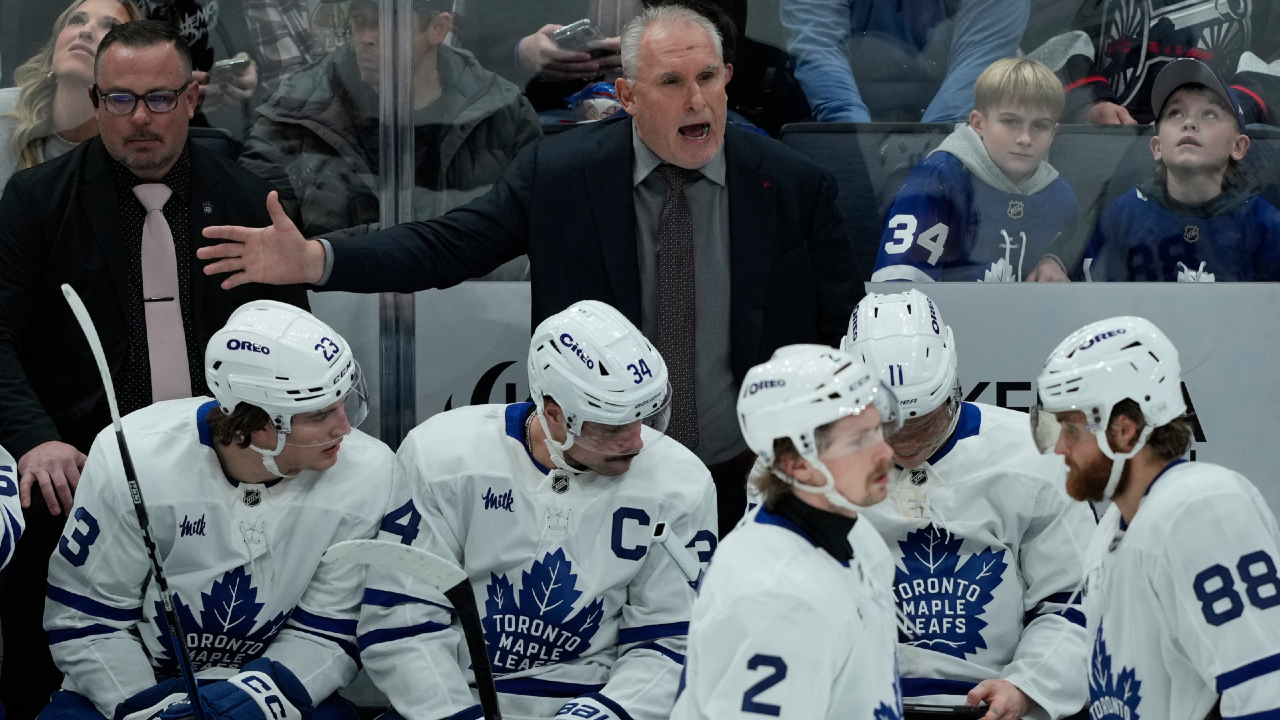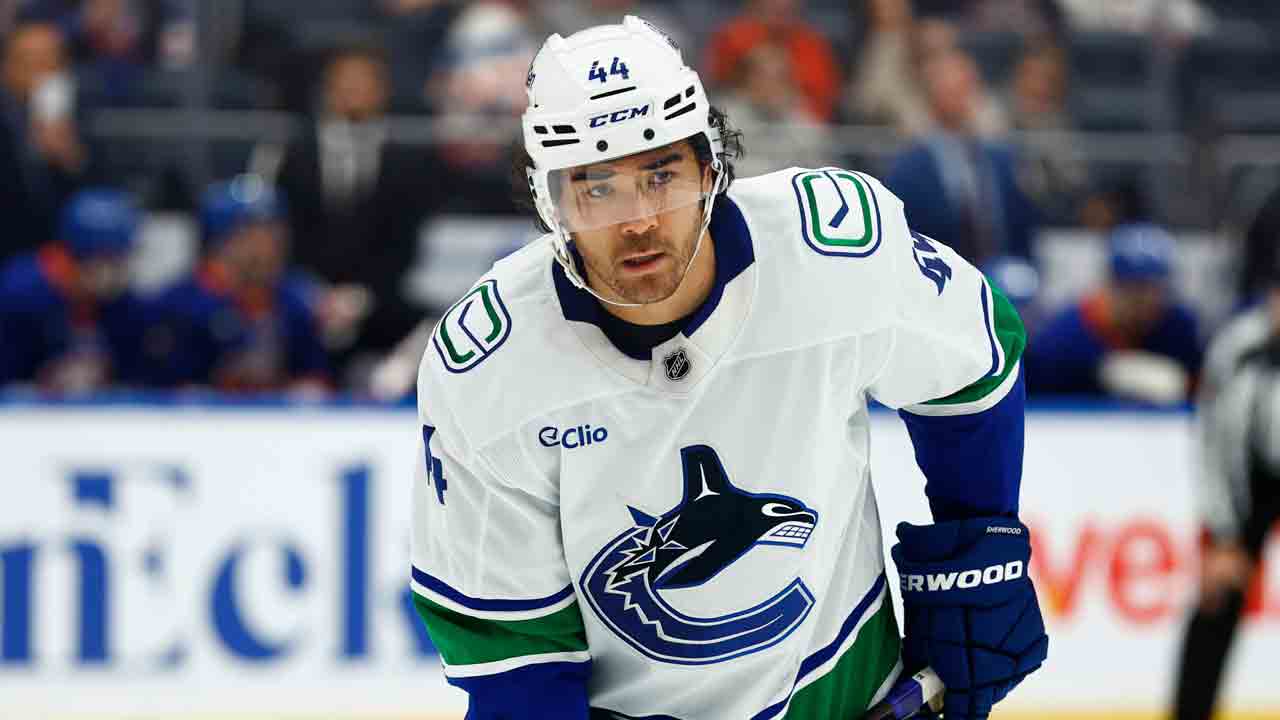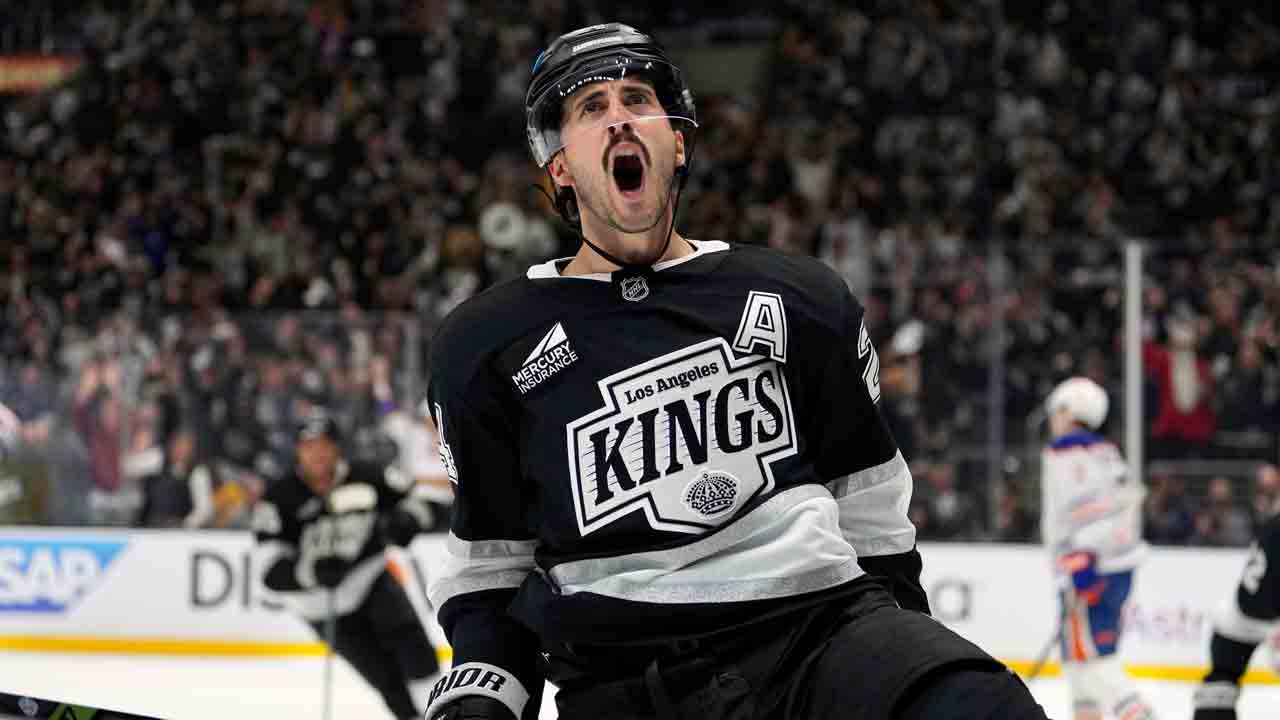
During the longest, most intense off-season of his life, Marco Rossi is asked if his meticulous, all-consuming training program has featured in any equipment tweaks.
“My jersey went from medium to XXL,” quips the top-10 prospect, not missing a beat.
The 19-year-old Austrian phenom’s wit is as quick as his first step.
And thanks to his unique and highly specialized workout program and 600-plus hours of sweat, he is only half-joking about his growth over the past seven months, leading up to a delayed NHL draft, where he could be selected as high as fifth overall.
“If you compare me in March to now, you see like two different persons right now. I’ve improved so much. It’s unbelievable,” Rossi says through his bedroom Zoom connection, six time zones away.
The way Rossi excitedly runs through a list of his improved attributes — faster, stronger, fitter, more explosive, better balanced — you’re tempted to trade up and draft him yourself to show him off at parties.
“And we could see that on the ice. It was, like, incredible. You see two different persons. And I was so shocked by myself too, because I was like, ‘Holy s—, what’s going on now?’ It was good. Like, I’m so happy right now. And now I just want to get better.”
Did we mention he juggles? Because now he juggles.
Sure, Rossi could’ve rested on the laurels of his eye-popping sophomore campaign for the Ottawa 67’s. His 39 goals, 120 points and plus-69 rating in 56 games told the player and his pursuers that he’s ready to turn pro, somewhere.
Instead, from March 13 to today, he’s thrown himself into five to 10 sessions a week with strength trainer Max Cavada of Cavada & Gertsching Personal Training.
On top of the two-a-days, Rossi began setting his alarm for 6 a.m. in late June and making the three-hour round trip to Zurich for practices with the Swiss A Lions (Auston Matthews’ alma mater) every Monday, Tuesday and Wednesday morning.
Between drills, Rossi is constantly picking the brains of the Lions’ former NHLers like Sven Andrighetto and Marcus Kruger.
“Actually, last practice we did like 30 minutes just on faceoffs,” says Rossi. “He won two Stanley Cups with Chicago. He has so much experience, and he’s really good on his faceoffs.”
Cavada would run Rossi through two or three strength sessions and one skills-heavy workout per week. Toss in regular physiotherapist appointments, massage therapy and media appointments, and Rossi has only taken Sundays off — unless he feels energized. In that case, he hits the gym on the day of rest, too.
Rossi began pushing himself in spring with his eyes set on a June draft. Learning the draft would be pushed to October came as a shock.
“Holy s—, it’s going to be three or four [more]months of just training,” realized Rossi, who has now invested 600-plus hours of off-season workouts.
Rossi and Cavada would dream up ways to break the monotony without detouring from the path. They’d head to the mountains for hill sprints. Run a slack line between trees. Combine the exercise ball with three juggling balls.
“It’s good, like for the brain and my mindset, because if you see every day the gym, sometimes you get bored. So, we did a really good job together, so that it wasn’t ever like, ‘Oh no, today I have to go again to the gym.’ It was never like that.”
“You never want to get the athlete bored,” Cavada agrees. Keep them fresh and motivated, even as the pandemic wears on and the goalposts shift. “I’ve really never seen an athlete work so hard and be so dedicated to the program, which makes it really easy to progress him and get the best out of Marco.”
Cavada empathizes with the elite athlete’s point of view because he was one.
A serious ski racer in a serious ski racing country until age 18, Cavada believes his own development was slowed by “a few really bad coaches,” whose fitness programs didn’t work for his body.
Once he started training himself by feel, Cavada felt fitter than his coach-guided competitors, trying to beat them every day up in the gym.
Inspired by his progress, Cavada began educating himself further in strength and conditioning and, in 2014, launched C&G, recruiting skiers, hockey players and other athletes.
Each program is tailored to the individual. Every session is a one-on-one.
Cavada constructs a workout regimen by first assessing the athlete’s (a) overall fitness picture (endurance, flexibility, balance, mobility); (b) personality and uniqueness (character, specific strengths and weaknesses); and (c) environment (family, coaching staff, physical therapists).
In Rossi’s case, this initial assessment revealed that the centreman was slightly stronger on his left side. Rossi had no clue. For hockey, balance and mobility are king.
“It wasn’t like I’m [lifting]40 kilos on that leg and 20 on the other one. It was just a little bit, but a little bit can be enough,” Rossi explains.
Cavada drilled down on one-leg work to establish a powerful symmetry in the teenager’s stride.
“We really focus on all-over symmetry, which is a really important part in unleashing speed,” Cavada explains. “If you’re symmetrical, your all-over strength gains are much higher.”
Cavada introduced Rossi to the slackline, one of the best tools to progress your balance and stability while simultaneously working core muscles. As the player improved, the challenges escalated. Jump onto the slackline, twist on it, deke a weighted hockey stick while traversing the tightrope.
“Of course, it’s hard at the beginning. You fail,” Rossi says. “But when you fail, it just gets me more hungry, and I want to learn it more and more.
“Now I’m really good at it.”
Same with juggling. Yes, juggling.
“Elias Pettersson can juggle,” points out Rossi.
No clown show. Juggling improves hand-eye coordination and widens peripheral vision.
“So when you’re in a stressful situation, like opponents coming up to you, you can take the better decision in the game,” Cavada says.
Cavada’s philosophy of discovering inefficiencies in a particular athlete, then pouring effort into the solutions is a time-consuming one. C&G only accepts 10 to 15 athletes a year, and those spots sell out fast, only vacated once someone graduates from the program.
But the results speak for themselves.
“He moves smarter, more effective, faster, stronger, and all components came together in the last two to three months,” Cavada says, proud.
The trainer first caught wind of Austria’s hockey phenom and started tracking Rossi’s career four years ago. Two years ago, they linked once Rossi noticed a peer of his using Cavada’s unique training methods on Instagram.
Finally, on Tuesday, the trainer and the trainee will together celebrate the rewards of all that gym time in the wee hours in Rossi’s family home in Austria.
“I’m just happy when he gets his contract and trying to give his best in the best league in the world,” Cavada says.
“That’s just the starting point of what could be something great — one of the big sport careers of our country or even the world.”
Passion. #WorkHard pic.twitter.com/kpfirL0s0V
— Marco Rossi (@marcorossi2383) September 29, 2020





